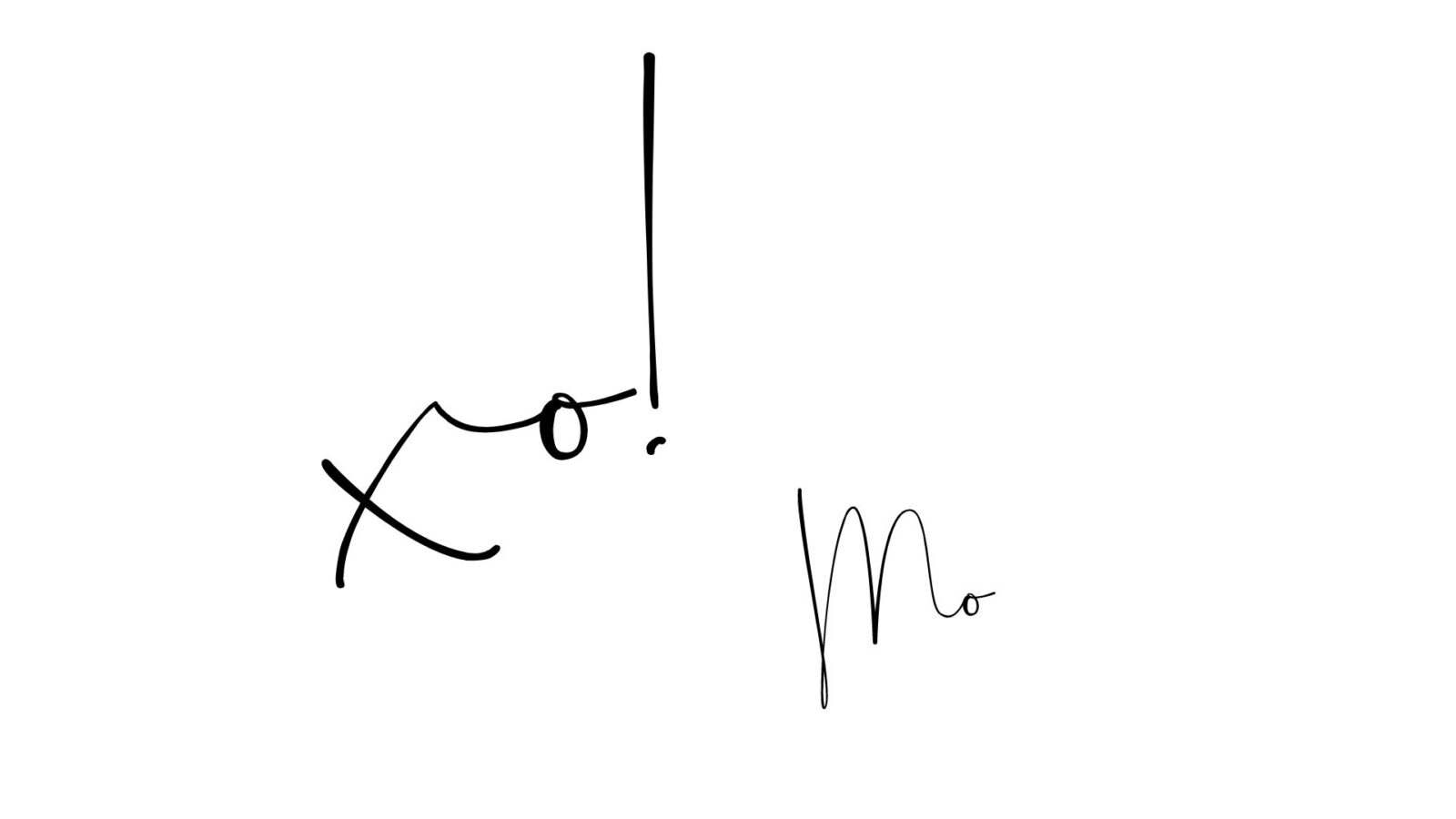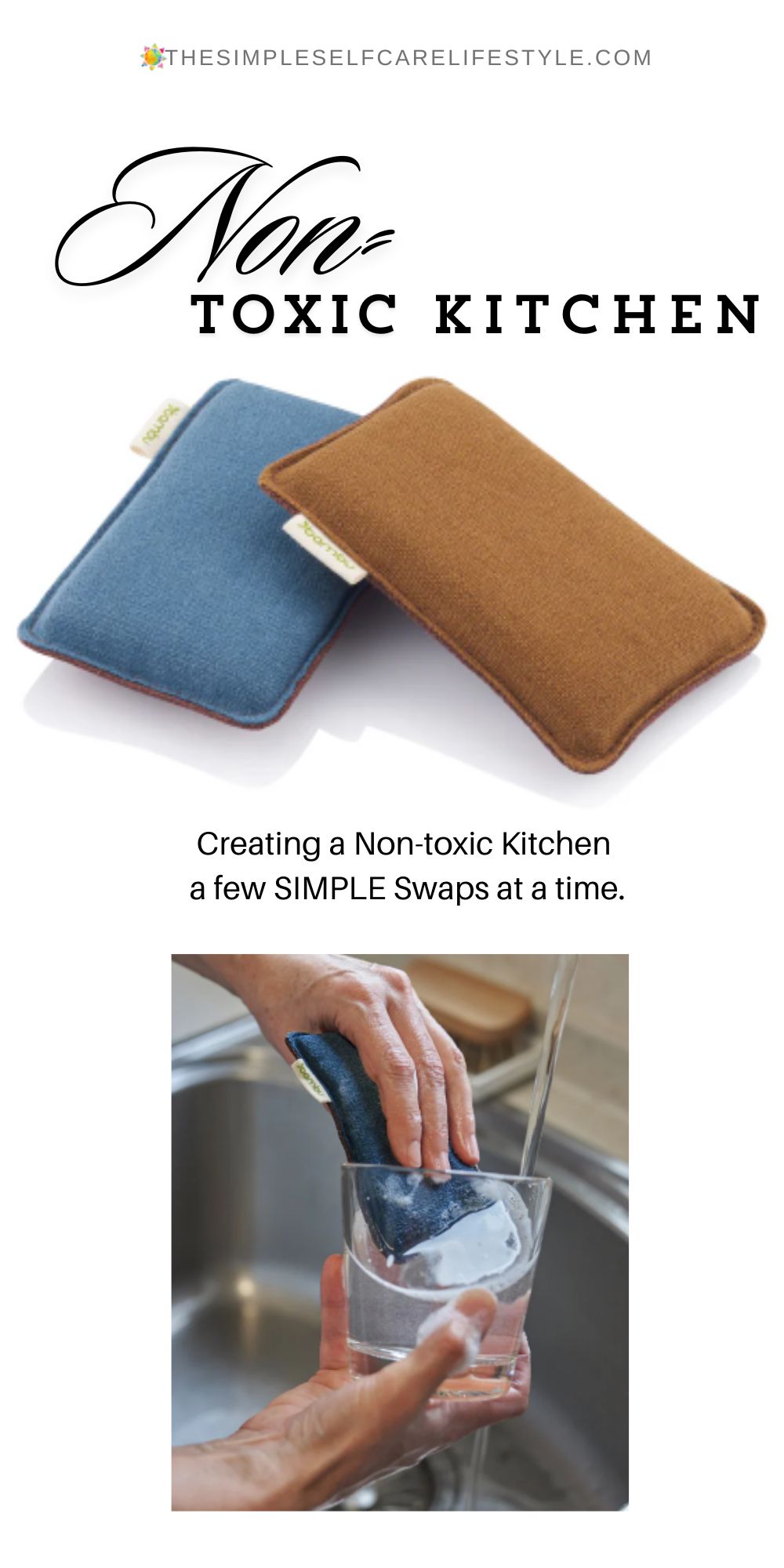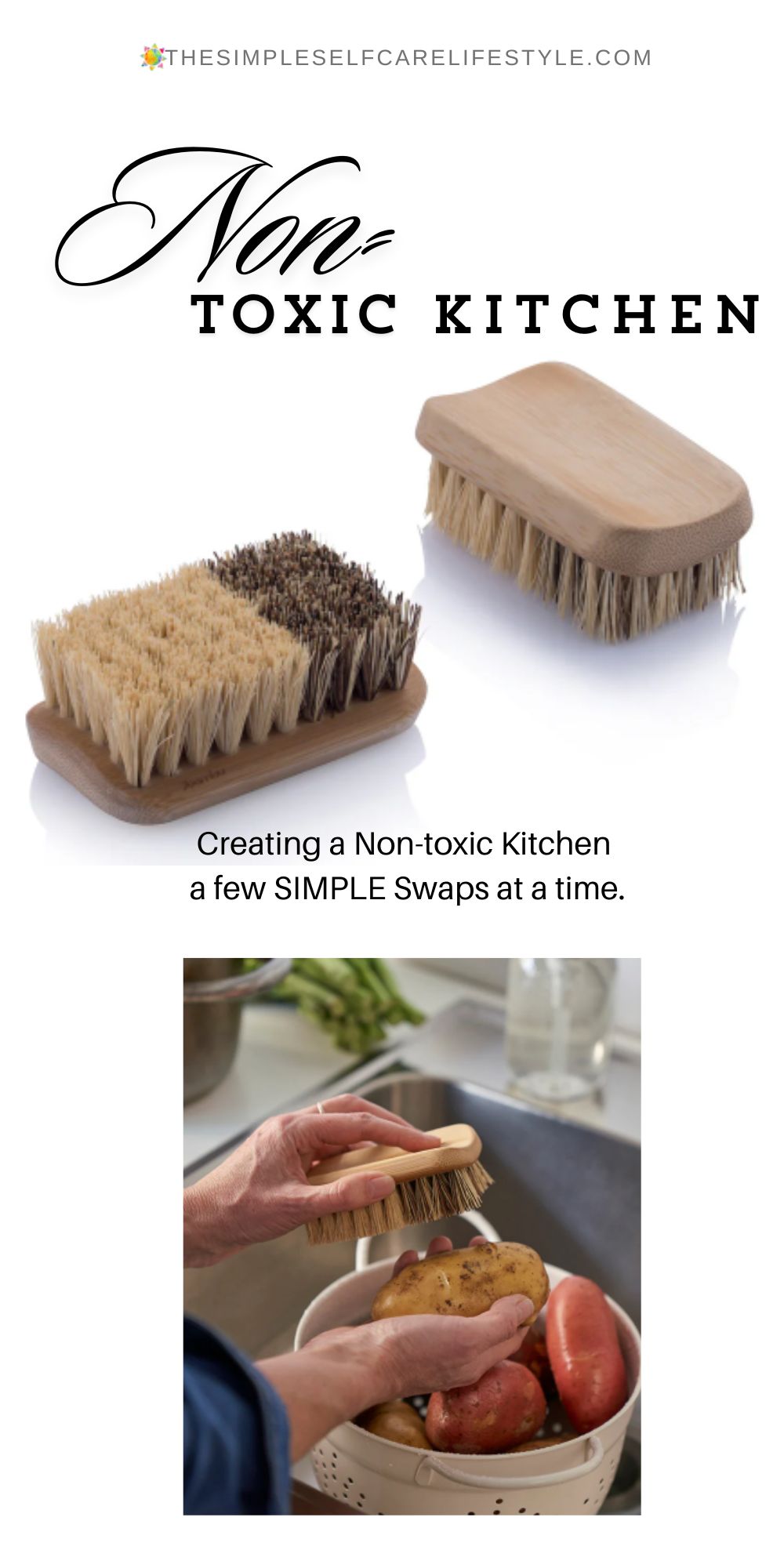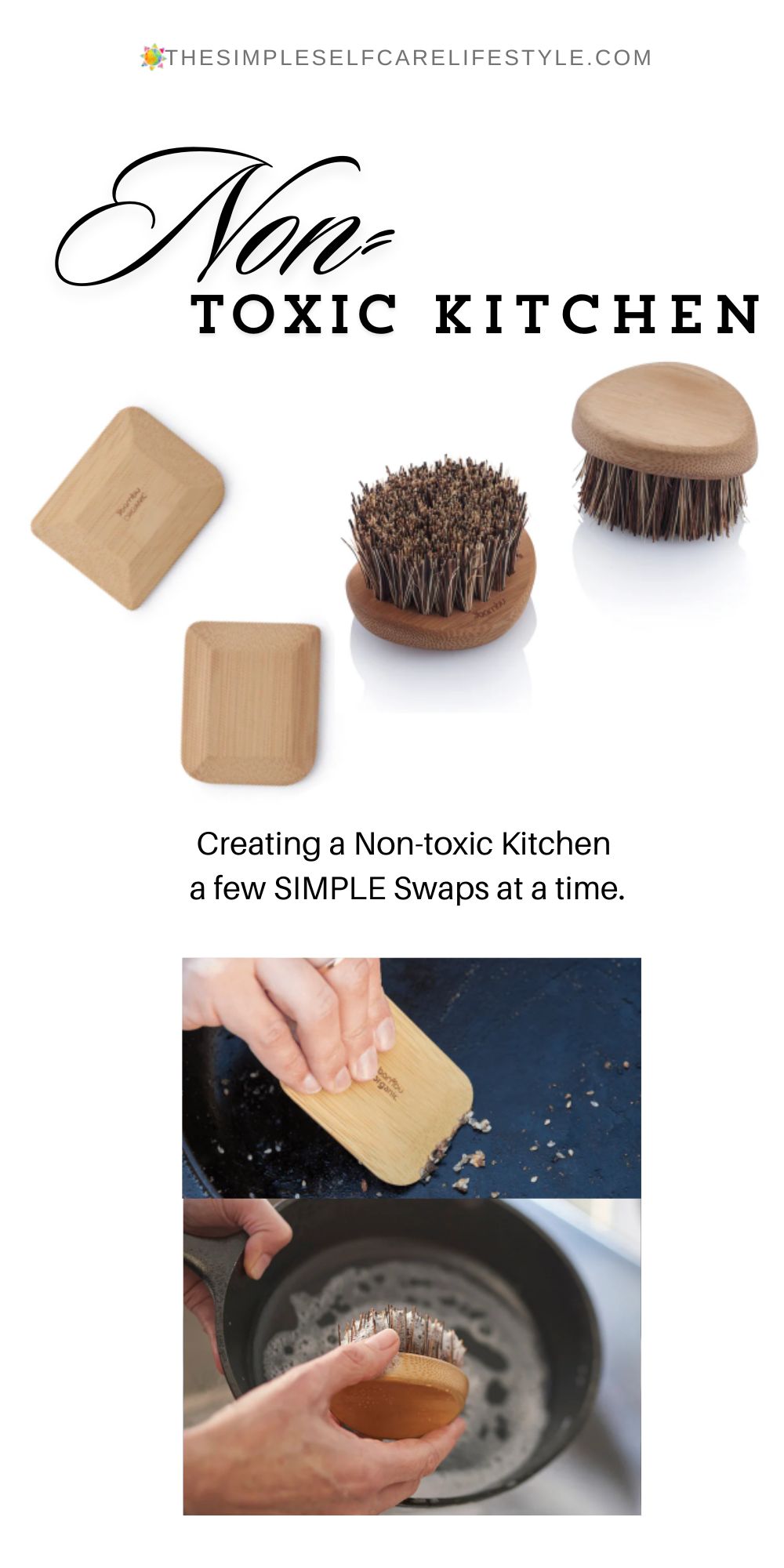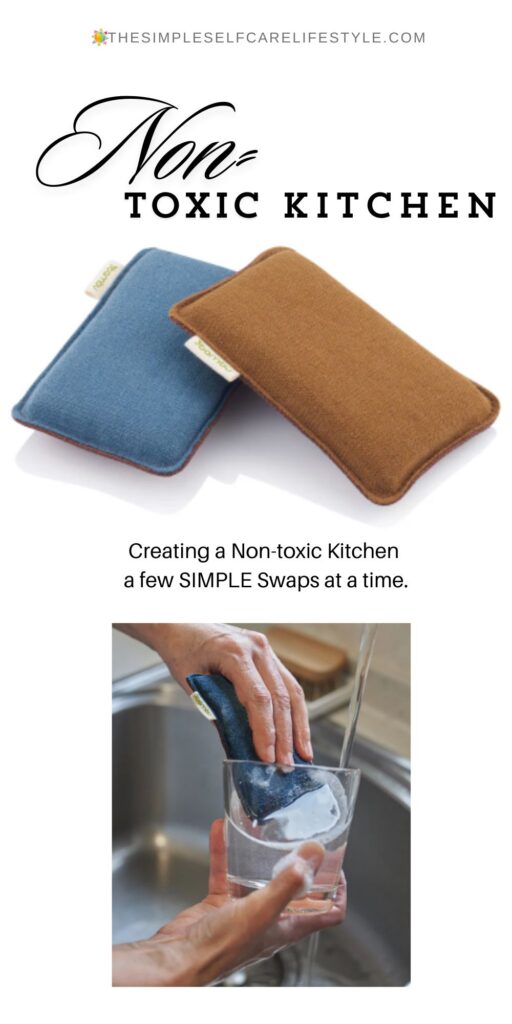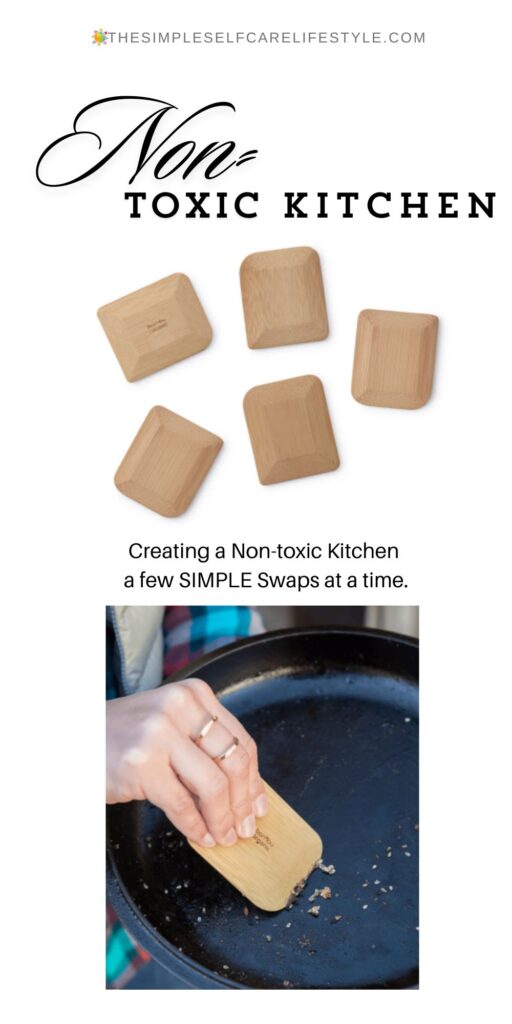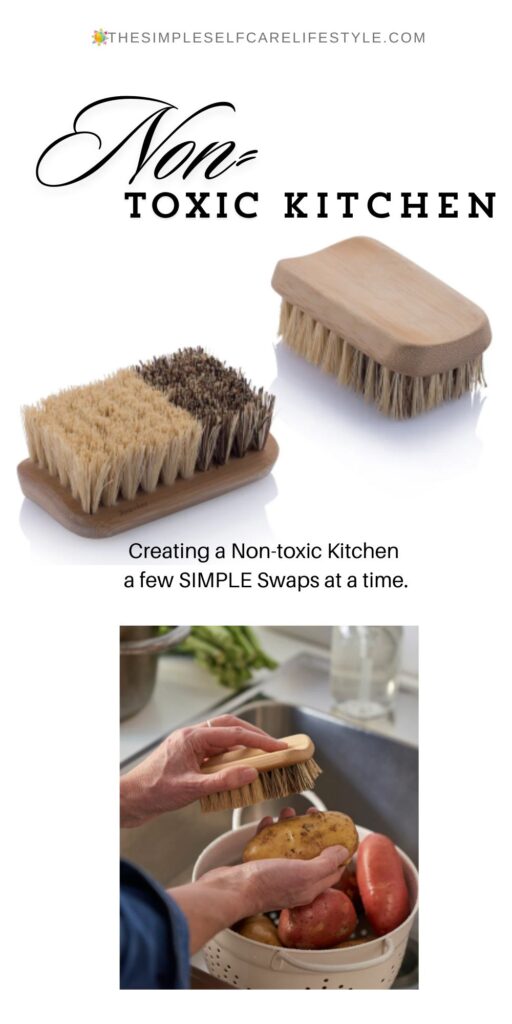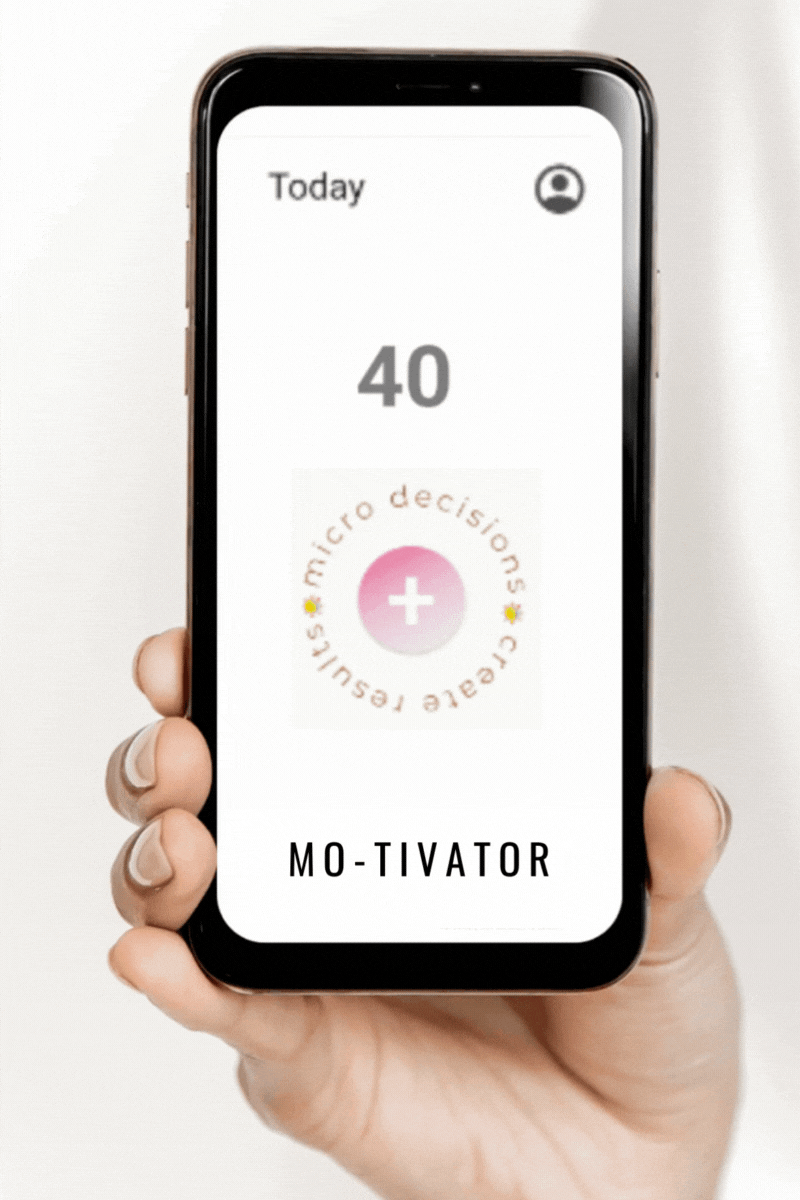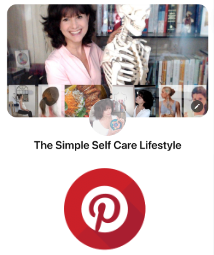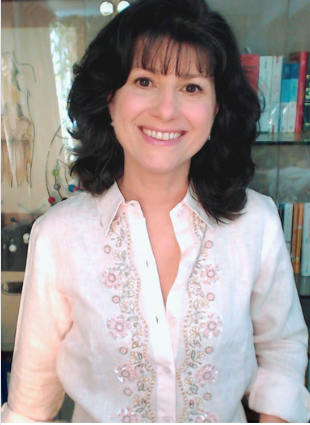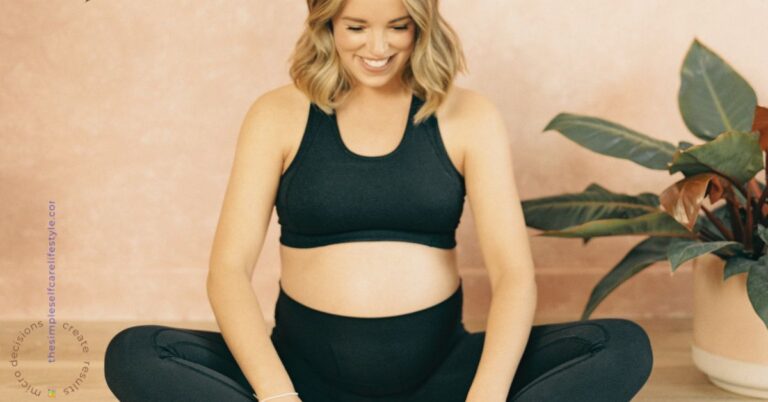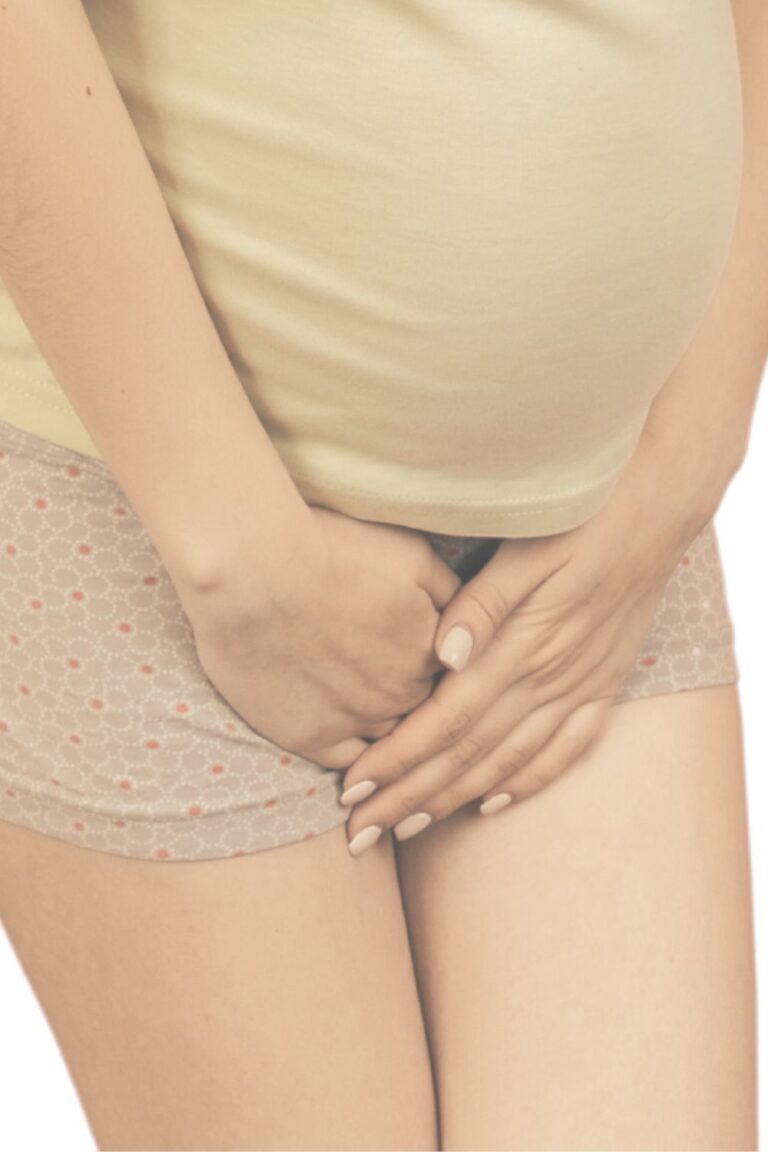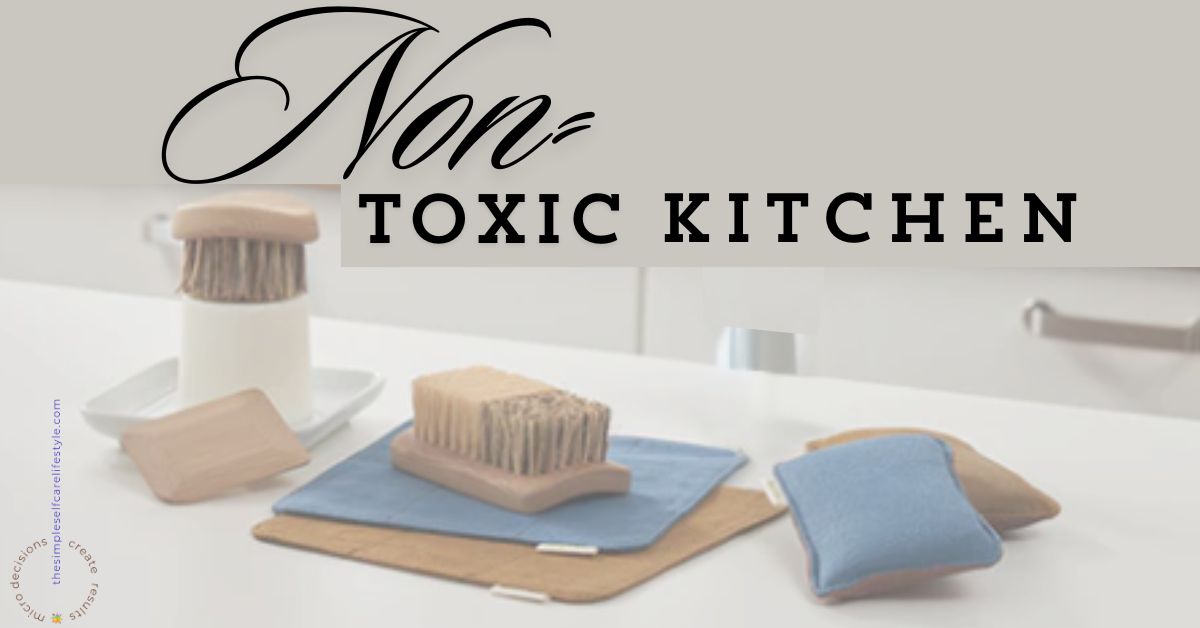
Non-Toxic Sponge, Pan Scraper, Scrubber & Veggie Brush
4 Simple Kitchen Swaps to Reduce Your Body’s Exposure to Toxins
Creating a Non-toxic Kitchen a few SIMPLE Swaps at a time.
Today’s Post We’ll Cover
- Everyday Kitchen Tools that are contributing toxins
- The 4 Non-toxic Replacements
- As always, the Research/Resource links are at the bottom.
Most sponges and dish brushes are made from plastic, which sheds microplastics that can end up in your food and (almost certainly) in our water systems. Plus, studies show that traditional sponges harbor bacteria and are dirtier than the average toilet (ew). Even so-called “eco-friendly” options often use nylon bristles, lacquers, and unknown adhesives.
(3)
Every six months, I stock up on all four of these Non-toxic cleaning items for my kitchen. I order them from here. Subscribers receive 10% off by using code: SIMPLIFYSELFCARE
What toxins are we reducing by Swapping out the typical Sponges, Pan Scrapers, Scrubbers, and Veggie Brushes?
The Swaps help us to avoid.
Kitchen Cleaning tools
TOXINS to look out for
- Plastics Microplastics and nanoplastics: The synthetic sponges can release microplastics and nanoplastics during use. (can accumulate in the body and release monomers)(8)(16)
- Chemical Dyes and Softners: Used to color the sponge. (1) Formaldehyde (plastics, adhesives). (2) To improve the sponge’s texture.
- Bleach: Some sponges may contain bleach to whiten and disinfect the material.
- Antibacterial, Antifungal, Antimicrobial agents like: Triclosan
Most conventional dish sponges are made from plastic and microplastics, which can release tiny particles as you use them.
“Synthetic sponges can be made of polyester, polyurethane, or vegetable cellulose. Polyurethane is used in polyester sponges for their abrasive side. Polyester sponges are more common for dish washing and are usually soft and yellow.
(11)
Microplastics and nanoplastics can be released from kitchen sponges during use.[2]“
Luckily, these days, we have options. We can use sponges made from natural materials like cellulose, bamboo, and hemp without plastics or toxic chemicals.
1st
Swap- The Non-toxic Sponge
The LongLife Sponge is a bamboo sponge made from USDA biobased certified, renewable materials. This is the Sponge that I have replaced my synthetic sponges with.
This Bamboo Sponge is the best of all the Non-toxic options I’ve tested. Cellulose, Swedish square sponge towels, Hemp sponges, including other Bamboo brands.
I’ve found the LongLife sponges to be, by far the best quality. They last the longest and are the easiest to keep clean.
The sponge is two-sided, with a scrubbing side made from 100% hemp and a washing side made from certified organic cotton and hemp. (the image is linked for you)
There is another feature that I appreciate, and that is I can choose from 2 colors. This makes it super easy for me to separate the sponges I’m using-
- Blue is for dishes.
- Brown is for counters and surfaces.
This sponge can be cleaned by throwing it in the washing machine.
sponge
- Two Sided
- Durable
- Plastic-free
- Chemical Free
- Has a nice feel to it. It is not harsh on the hands.
cleaning
& Disposal
- I spritz my Sponges with Nature’s Force Spray after each use.
- The Sponge is designed to be cleaned in the washer and used repeatedly.
- LongLife Sponge takes longer to dry. It is recommended to use a vertical sponge holder between uses.
- When you are ready to change the sponge, it is good to know it is compostable.
2nd
Swap- The Non-toxic Scraper
The Scrapers (come as a five pack) are certified organic bamboo. (the image is linked for you)
scraper
- Each edge has a different shape, making it easy to get into any corner.
- I also use them on glass baking pans that I use for roasting, and they work well.
- They are nice to use on the Römertopf too- with no scratching.
- I even use one on my glass stove top. (which is great!)
- They are really handy, and I’m glad they come in a pack of 5. I’ve even grabbed one to scrape honey out of the jar.
- Like the sponges, they are comfortable to hold in your hand.
cleaning
& Disposal
- I hand wash them.
- Place them in the dishwasher.
- I have yet to dispose of one.
3rd
Swap- The Non-toxic Scrubber
The scrubbing brush is made of USDA Biobased certified, renewable, and biodegradable materials. Each brush is 100% plant-based, vegan, and made without glues, lacquers, or other chemicals. (the image is linked for you)
scRubber
- The all-natural bristles and compact design fits into tight areas.
- The bristles are designed to be suitable for cast iron, ceramic, and carbon steel surfaces without scratching.
- I find that to be true. The bristles are strong enough to do the job and gentle enough not to scratch.
- It’s been great for getting tougher remnants on Pots and Pans AND
- All my glass Pyrex containers. The corners get nice and clean using this scrubber.
- Like the sponges and scrapers, they are comfortable to hold in your hand.
cleaning
& Disposal
- The company suggests after scrubbing to shake and set bristle-down for efficient drying.
- I will rinse and spritz with Nature’s Force Spray after each use.
- And I do place them bristle down on a small dish on my sink’s rim.
- I have yet to dispose of one.
4th
Swap- The Non-toxic Veggie Brush
USDA Biobased certified All-Purpose Scrub Brush is made with only renewable, plant-based materials. The brush is free from plastics, glues, and chemicals. (the image is linked for you)
scRubber
- The all-natural bristles are designed to be suitable for cleaning without ruining the surface of the vegetable.
- There are plenty of bristles to get into the nooks and crannies of veggies.
- It is a two-sided brush. You will notice the different colors of bristle. Side one is stiffer and ideal for root crops. Side two, the soft side, is designed for delicate vegetables and fruits.
- Like the sponges, scrapers, and scrubber, the Veggie brush is comfortable to hold and use.
cleaning
& Disposal
- As with the Pot and Pan Scrubber the company suggests to shake and set bristle-down for efficient drying when not in use.
- I rinse and spritz with Nature’s Force Spray after each use.
- They mention that you can sanitize your brush as needed by soaking the bristles in white vinegar for an hour before rinsing and air drying your tool.
- I do place the scrubber bristle down on a small dish on my counter.
- I have yet to dispose of one.
The products highlighted are on the Shop for Your Home page, along with a link to Today’s Post. This way, when you are ready to make your Swaps, you’ll have easy access to the products and can connect back to the information. (Thanks for the suggestion, Serrah!)
Products for Your Home
Non-toxic Kitchen, Laundry, Bedding, & Living Space Products…
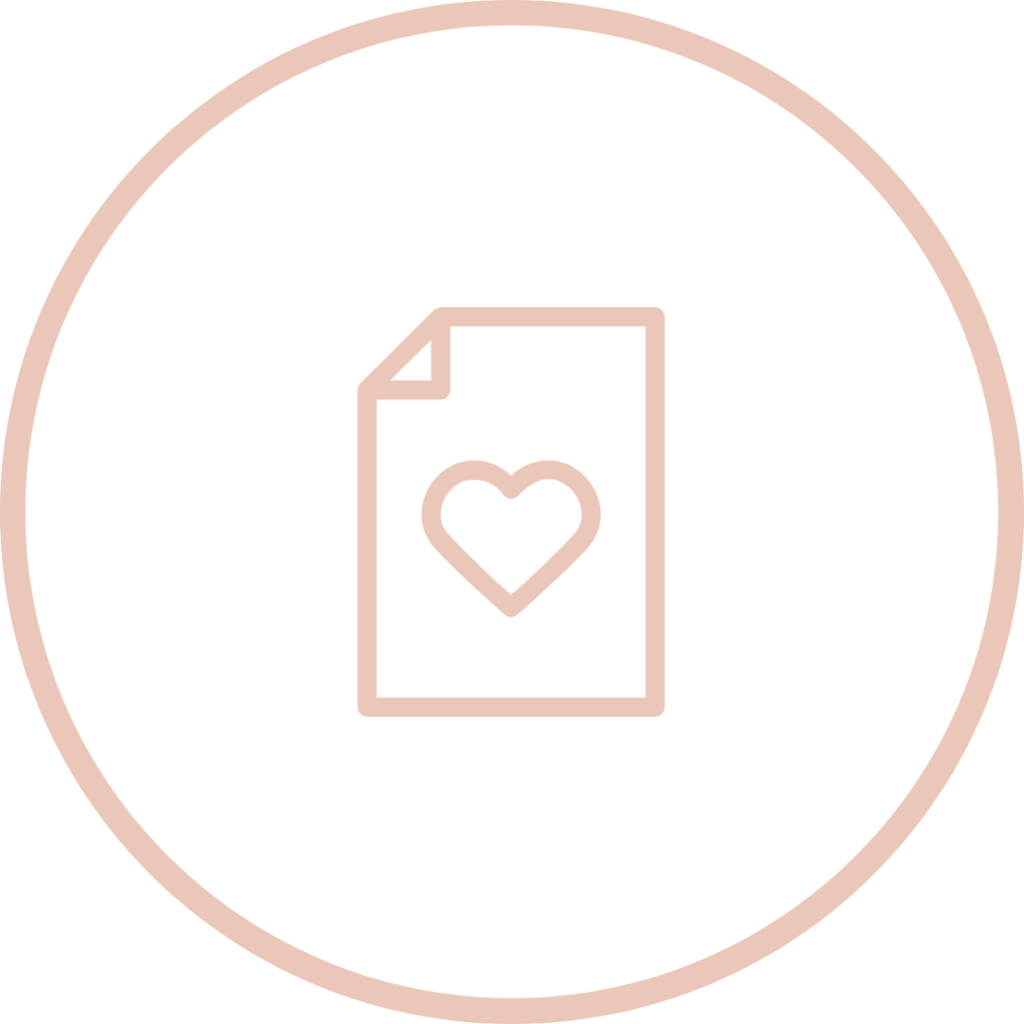
Re-cap
Making 4 SIMPLE Self Care Swaps reduces our toxin exposure.
- Swap 1 Bamboo Sponge
- Swap 2 The Pan Scraper
- Swap 3 The Pots and Pans Scrubber
- Swap 4 The Veggie Brush
If you are using the MO-TIVATOR APP this is one of those Amazing SIMPLE Self Care things you can do to jump-start your Self Care!
I like prioritizing the Simple Swaps because they have exponential results and give our Motivation a BOOST!
If you found value in today’s Simple Self Care Lifestyle Product information, I’d love to know what was most helpful to you. What you share helps my goal of creating Simple Self Care Content that’ll make The Simple Self Care Lifestyle website become the resource you turn to when it comes to creating The Simple Self Care Lifestyle you want. My email: [email protected]
Unlock Your Motivation!
Achieve Your Goals
1 Micro-Decision at a time
We respect your privacy. Unsubscribe at any time.
Other Simple Swaps to Non-Toxic Products:
Other SIMPLE Self Care Swaps to Non-toxic
- Non-Toxic Cutting Boards
- Laundry Post,
- Non-Toxic Cleaner that WORKS!
- Candles Post,
- Tea Kettle post
- Nail Polish
- Sunscreen…
are there too, always focused on WHY to swap, HOW the benefits help you move toward the 1 Goal of Optimizing Your Body’s Terrain.
